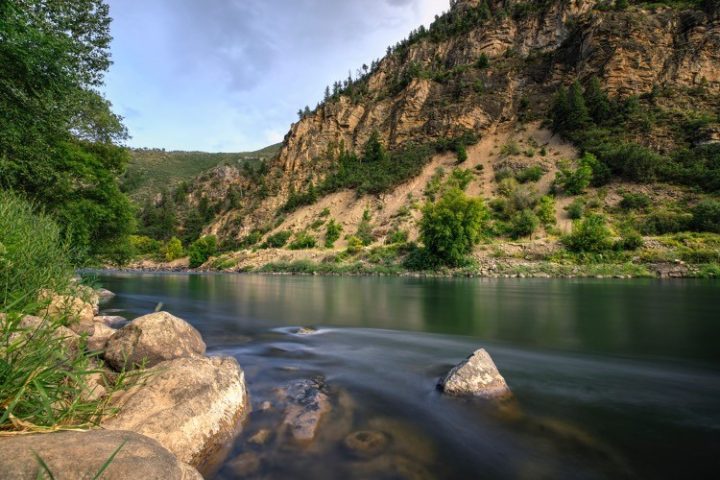
Six of seven western states that rely on water from the Colorado River have reached consensus on a model to dramatically cut water use in the river basin, after the federal government called for action last August.
The states of Arizona, Colorado, Nevada, New Mexico, Utah, and Wyoming jointly submitted a letter on Monday to the Bureau of Reclamation that outlines a Consensus-Based Modeling Alternative (CBMA) for Reclamation to evaluate and incorporate into its development of a Supplemental Environmental Impact Statement (SEIS) to revise current Operating Guidelines (’07 Guidelines) for Glen Canyon Dam at Lake Powell and Hoover Dam at Lake Mead.
California, the seventh state, which has the largest allocation of water from the river, is the lone holdout. The Guardian shared, “JB Hamby, chair of the Colorado River Board of California, said California will submit a model for water reductions in the basin that is practical, based on voluntary action and aligns with law governing the river and the hierarchy of water rights.” “California remains focused on practical solutions that can be implemented now to protect volumes of water in storage without driving conflict and litigation,” Hamby said in a statement on Monday.
The Colorado River and its tributaries pass through seven states and into Mexico, serving 40 million people and a $5 billion-a-year agricultural industry. The precious river water provides relief to large western cities including Denver, Las Vegas, Phoenix, and Los Angeles, in addition to two Mexican states and Native American tribes, all of which depend upon the valuable resource. The river has been suffering from the effect of a severe mega drought along with overuse that has led to record low levels of the region’s reservoirs.
“While the Consensus-Based Modeling Alternative is not a formal agreement between the Colorado River Basin States, it serves as an alternative framework for Reclamation to analyze in its SEIS process. It provides an approach to help protect Glen Canyon Dam and Hoover Dam infrastructure, water deliveries, and power production to mitigate the risk of either Lake Powell or Lake Mead reaching dead pool,” the Colorado Water Conservation Board shared in a press release.
With ongoing negotiations, the states who submitted the CBMA proposal acknowledged ideas they put forth could be excluded from final plans to operate the river’s major dams. They noted that what they proposed does not override existing rights states and others have to the Colorado River.
John Entsminger, general manager of the Southern Nevada Water Authority, said all states have been negotiating in good faith. “There’s a lot of steps, commitments that need to be made at the federal, state and local levels.”
“Monday’s proposal included accounting for the water lost to evaporation and leaky infrastructure as the river flows through the region’s dams and waterways. Federal officials estimate more than 10% of the river’s flow evaporates, leaks or spills, yet Arizona, California, Nevada and Mexico have never accounted for that water loss,” reported the AP article.
“The challenge we continue to face is dry hydrology and depleted storage across the Colorado River Basin. The CBMA provides a path forward so that every state can contribute to finding a solution in close collaboration with our Tribes and water users,” said Gene Shawcroft P.E., Utah Colorado River Commissioner.
The Bureau of Reclamation will consider the CBMA as part of a larger proposal to revise how it operates Glen Canyon and Hoover Dams. The bureau reportedly will “put out a draft of that proposal by early March, with a goal of finalizing it by mid-August when the agency typically announces the amount of water available for the following year,” and “will do what’s needed to ensure the dams can continue producing hydropower and deliver water.”
For at least the last two years, the Bureau of Reclamation’s annual water availability announcements have led to mandatory cuts for Arizona, Nevada, and New Mexico in the river’s Lower Basin. With the mega drought still wreaking havoc to the region, the other Colorado River Basin states may face mandatory cuts as well, though recent well-above-average snowfall in the Rockies may hold off those potential cuts.
However, lacking California’s participation, the six states’ CBMA proposal won’t be enough to balance the demand placed upon the Colorado river. California needs to join in and offer to conserve water as well before the river runs dry or the federal government steps in and turns off the spigot.




